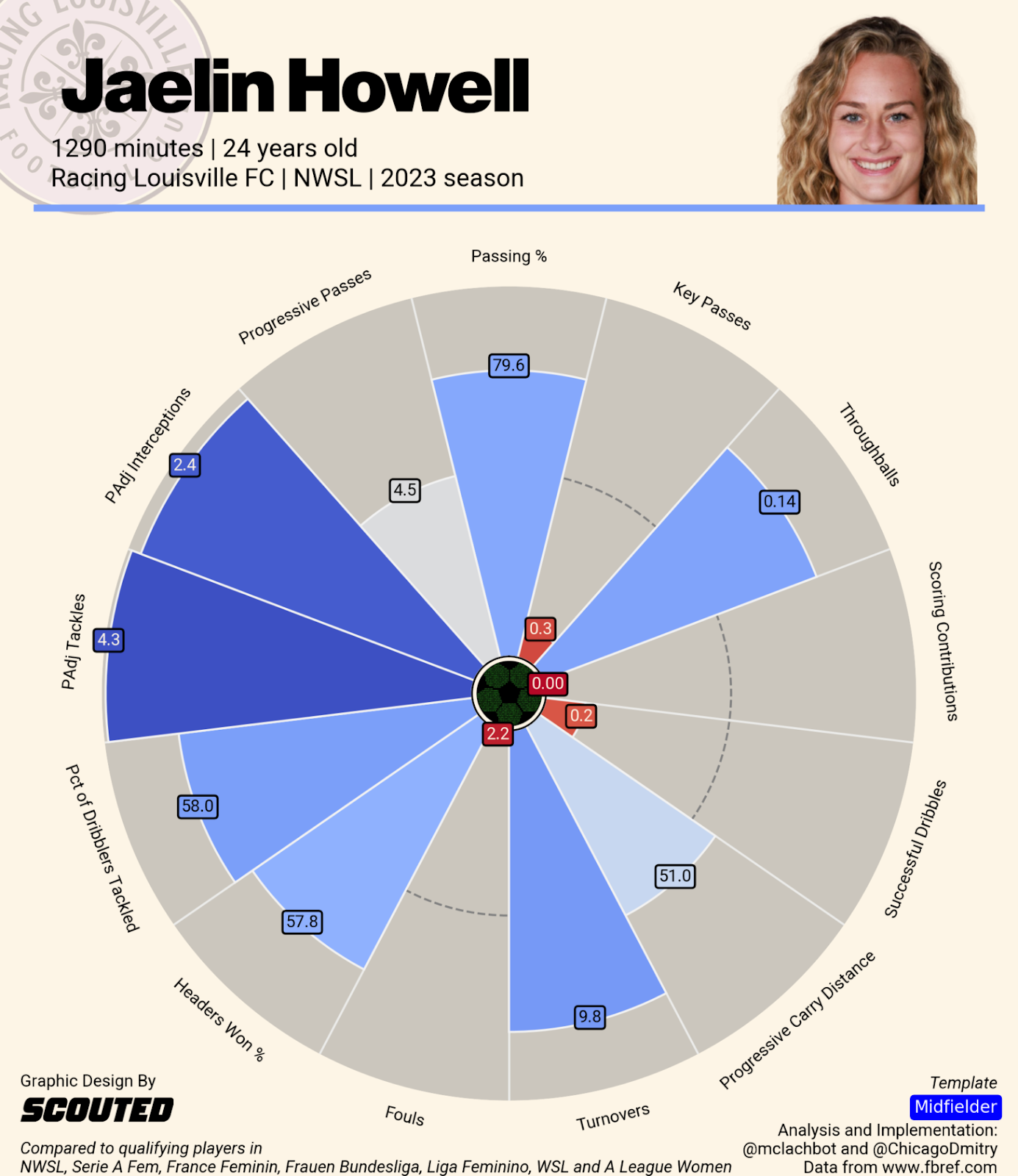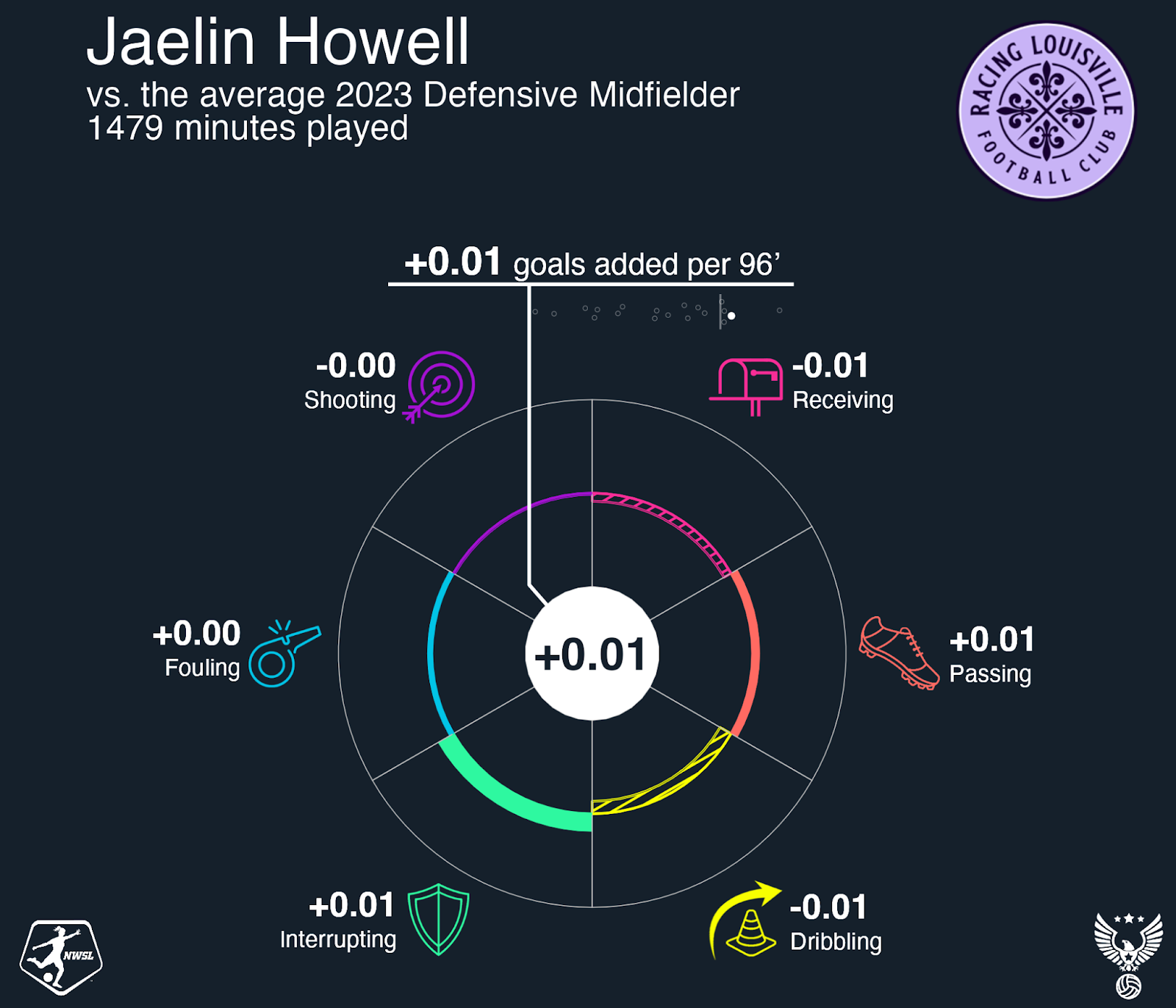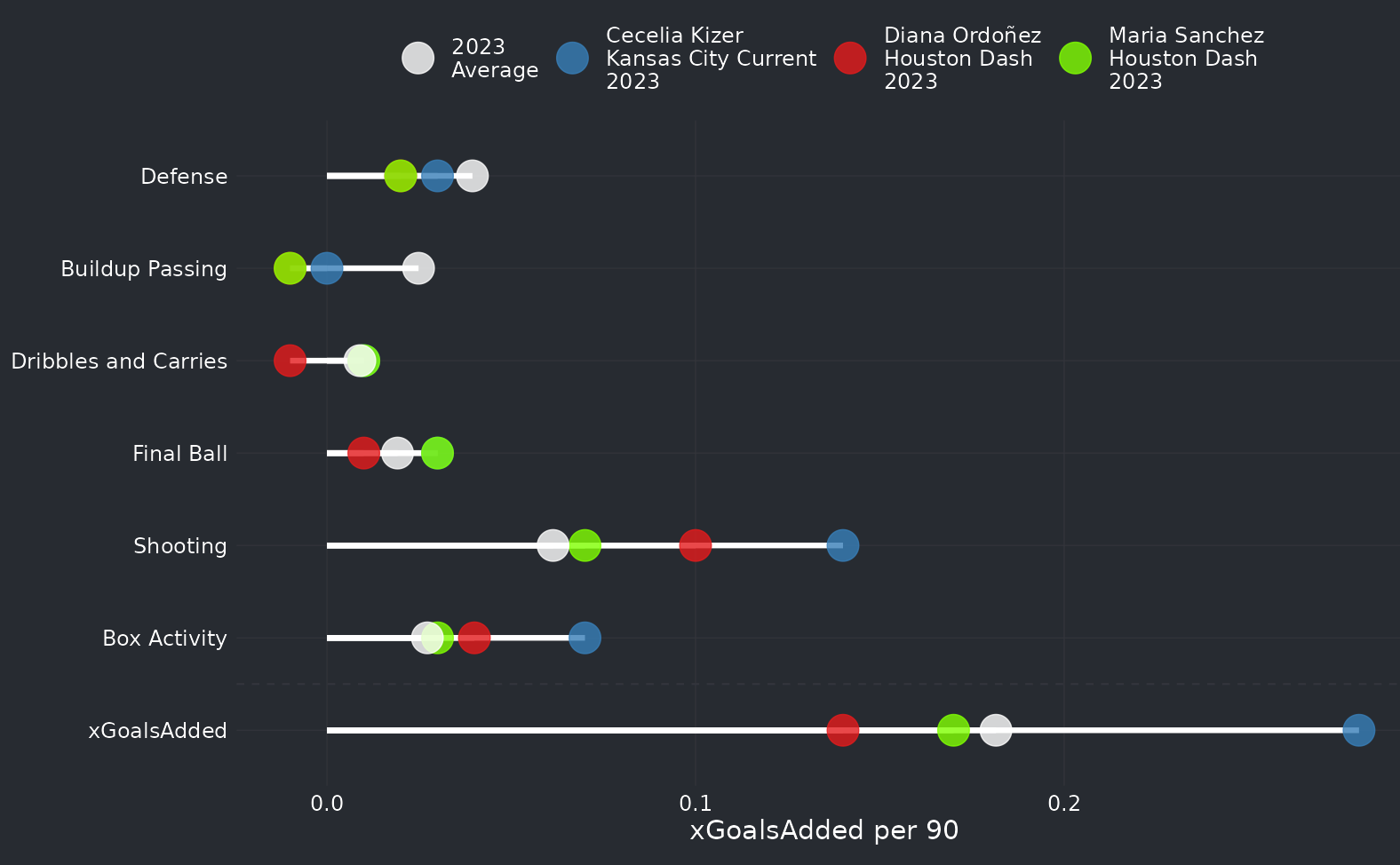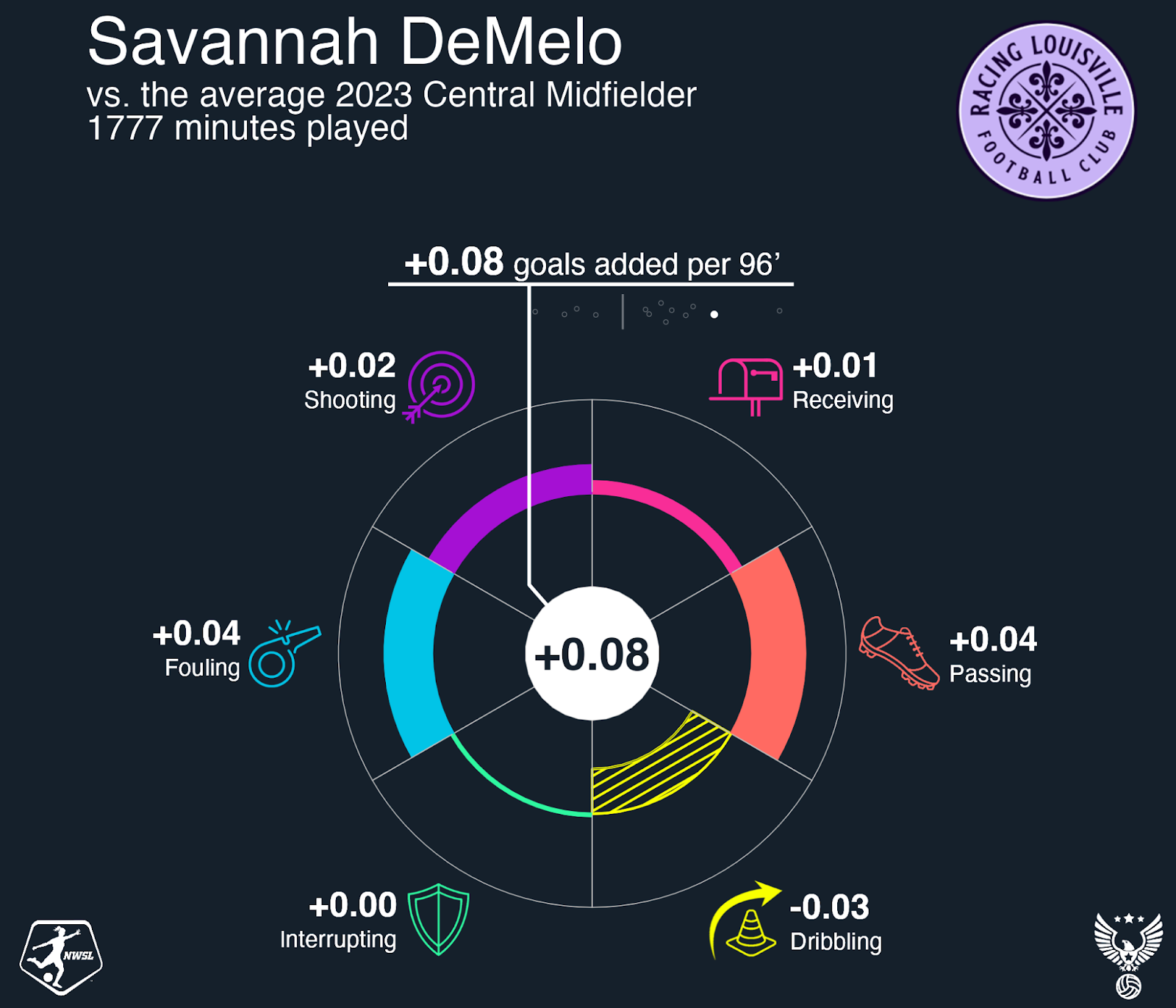2024 NWSL Season Previews: Houston Dash and Racing Louisville
/We’re releasing team previews ahead of the NWSL season that kicks off on Saturday, March 16! Our third edition includes the Houston Dash and Racing Louisville. You can find all of our season previews here!
Can you Door-Dash a New Reset Button?
The Houston Dash really, really want to be a real team.
Oh, they’ve come close once or twice. They won the inaugural, COVID-haunted NWSL Challenge Cup back in 2020. A few months of Juan Carlos Amorós got them over the playoff line back in 2022. Beyond those two glimmers of hope, it’s been a long road of owner disinterest, abusive coaches, criminally small crowds, and heatstroke.
2023 was no different. New GM Alex Singer hired former Seattle Reign assistant coach Sam Laity to patrol the touchline. Laity had a reputation as a strong tactical thinker who’s good with players, and he has a future in the business. But his time as Dash head coach was a mess. Singer traded for Diana Ordóñez after her blazing rookie campaign with North Carolina, and Laity promptly structured a forward line led by Ordóñez, Dash stalwart María Sánchez, and young English phenom Ebony Salmon.
By late May, the Dash were averaging less than a goal per game. Ordóñez hadn’t found the back of the net. Salmon was benched. A back- three had been installed then abandoned. The team thrashed about for answers. By early September, Laity was gone.
Sure, their non-penalty xG under Laity was significantly better than the 11 non-penalty goals they actually scored, but 18.3 npxG still only put them above the Chicago Red Stars on that leaderboard. Their 13 non-penalty goals conceded were largely the result of Jane Campbell’s goalkeeping heroics, not any actual defensive quality. (Their npxG allowed under Laity? 21.5, ninth in the league.) Neither Sánchez nor Ordóñez recaptured their 2022 form. The team wasn’t bad, per se; they just didn’t really exist.
Singer had to reset again. The club could have signed Amorós at the end of their lone playoff run, but weren’t prepared to open the checkbook to keep him. Laity was a square peg in a round hole. So, in chasing the trend of Spanish managers with pretensions of stylistic identities, she hired Fran Alonso away from Celtic.
In Fran We Trust
Alonso stems from the Ronald Koeman and Mauricio Pochettino coaching trees. In his three full seasons in charge at Celtic, he helped push the team to two second-place finishes in the SWPL and the club’s first-ever Champions League berth. Celtic played an aggressive 3-4-3 that loved to press and possess, dominating most teams they faced. Glasgow City are the titans of Scottish women’s football; though Celtic never overtook their crosstown rivals for the title under Alonso, they did manage six wins in 14 matches against them across all competitions, including the 2022 Scottish Cup final. Celtic went four-for-four against Glasgow City in the final eight months Alonso was in charge, suggesting that perhaps he was finding his groove as a manager. (He also went 5-2-5 against Rangers during his tenure, so comme çi, comme ça.)
On an upcoming episode of Expected Own Goals, the new women’s soccer podcast partner here at ASA, Dash reporter Theo Lloyd-Hughes made a strong case for Alonso as both a tactical and player-management coach, describing his style as “free jazz.” He wants to play intense, attacking possession football, a variant on what Albertin Montoya wants to do with Bay FC, and what Jonatan Giráldez will want to do with the Washington Spirit. But the royal we of American Soccer don’t have the same familiarity with Alonso. Celtic SWPL highlights live on YouTube, but no 90-minute matches. No advanced data exists in the public sphere to examine Celtic underneath the hood. The Gini coefficient of points for the 2022-23 SWPL season was 0.33. There was more disparity in the SWPL that year than the big-5 European leagues and the Damallsvenskan in Sweden. What can Celtic’s performances really teach us, then, about what the Dash will be in 2024?
Let’s start by looking at the players.
CECE KIZER: THE SHARPEST NEW ARROW IN THE QUIVER
Trading Nichelle Prince for Cece Kizer and an international spot is a fleecing. Kizer is three years younger than Prince, and her production since 2022 for a speedy, dribbly attacker has been among the best in the NWSL. Only eight other attackers who played at least 1,000 regular-season minutes last year topped Kizer’s 0.47 non-penalty xG+xA/96 figure. 0.10 g+ above average per 96 tied her for ninth. By Net g+/96, she was sixth. Her carrying tools—running off the shoulder to receive service, plus creating shots for herself off the dribble—make her arguably the most incisive attacker the Dash now have.
Graphic courtesy of ALPHONSO: The DAVIES Database
If Alonso’s objective is to play aggressive and progressive, he could do worse than with Kizer leading the line.
MARÍA SÁNCHEZ & DIANA ORDÓÑEZ: REDEMPTION ARCS
Laity’s tactical system certainly didn’t bring out the best in either Sánchez or Ordóñez. Laity’s defense-first approach meant that more touches were ending up at Sophie Schmidt’s feet last season than Sánchez’s, relative to the previous campaign. Sánchez touched the ball almost six fewer times in 2023 than she had when Sarah Lowdon and Amorós ran the team. The contrast between Ordóñez’s heatmaps with the Courage in 2022 (getting wide and making diagonal runs) and 2023 (staying more central with less room to move) is stark.
Ordóñez took nine fewer touches per game in Houston than she had in North Carolina. In theory, Kizer adds both a passer and an off ball mover to provide a more balanced attack. Ordóñez can make the runs into the channel, knowing Kizer will fill her space, without suffering quality-wise in wide areas.
2022 Heatmap
2023 Heatmap
Heatmaps courtesy of Sofascore
JANE CAMPBELL: RIDING HIGH OR SINKING FAST INTO THE GULF?
It is awfully tempting to think that Campbell’s hero-ball last year could stick around. Campbell’s 0.16 Shotstopping/96 in the regular season sat behind only Katie Lund of Racing Louisville. Her 0.03 Sweeping/96 tied with Aubrey Kingsbury at the top of the leaderboard. She played aggressively, and was a bouncy brick wall. She is the reason the Dash maintained such a sterling defensive record.
But given what we know about the stability of GK analytics, is it sustainable? Campbell was a pretty poor shotstopper in 2022, and a pretty good one the year before that, when she was named third keeper for the U.S. women’s national team at the 2021 Olympics. She may have unlocked something last offseason; she may have just ridden a hot hand. That shock of wild blonde hair will be between the sticks no matter what.
FULLBACKS???
Allysha Chapman went on family leave for 2024, leaving a big hole on the back line. Then, Caprice Dydasco departed for Bay FC. One of the best defensive fullback pairings in the league would not be available. How would Singer and Alonso address the deficit?
Get lucky and draft Avery Patterson in the second round, that’s how. No draft analyst thought that the 21-year-old UNC winger would still be around by pick No. 19. She completed 40% of her crosses in the NCAA last season, and has both the fitness and the nous to be converted deeper on the pitch. Of course, her attacking prowess should not go begging, either, which is why a chance at left wingback could unlock all of her gifts at once.
Similarly, on the other side, Michelle Alozie could be a comfortable fit on the right of Alonso’s 3-4-3. The Nigerian winger had an excellent year in an otherwise dreary one for the rest of the squad, posting 0.40 npxG+xA/96 while tying Sánchez for most goals on the team. g-, ASA’s off-the-ball defensive stat, is still too influenced by teammates and tactical system to be that sticky, but for what it’s worth, Alozie’s 0.04 g-/96 figure was the best of all regular attacking players. One could see, given the rough state of Houston’s defensive performance in front of Campbell, that it may more accurately reflect Alozie’s positional acumen than it would with other players. Regardless, Alozie is a perfect two-way threat on the right side and should continue developing as a right wingback under a coach who could unlock her even more.
CENTRAL MIDFIELD: Balancing all the spinning plates
Somehow, despite Marisa DiGrande (née Viggiano) heading to Louisville, Houston still has a glut of central midfielders to contend with. Toss in Sophie Hirst and the Dash have five playable center mids. Andressa Alves will be available for the full season. Sophie Schmidt may have retired from Canada, but the 35-year-old Dash talisman isn’t going anywhere. Singer signed Yūki Nagasato away from Chicago, and Elin Rubensson away from Häcken. If Sarah Puntigam earns playing time—and does so off the back line—that pool expands to six. Keeping in mind Alonso’s preferred 3-4-3 system really only features two center midfielders (if we are operating on the premise of a Kizer - Ordóñez - Sanchez front three), that’s a log jam!
Some of that log jam can be alleviated by Schmidt (and Puntigam) seeing some time at centerback, and Hirst may need some seasoning before she’s a consistent starter. But a lot of these issues are solved by looking at the age profiles. Schmidt is 35, Nagasaki is entering her age 36 season, Andressa and Rubensson will be 31 during the season. Rubensson is an adept ball winner - ranking 15th among DM’s and box to box midfielders of knockout stage nations interruptions and regains per 90, adjusted for possession - and feels like a shoe in for the role. But given the fixture congestion across an NWSL season, there might just be enough minutes anyways to manage players on the down slope of their career.
This is the first time in a long time where the Houston Dash have some potential—more than that, a developing identity (the buzzword this offseason among GMs and head coaches). Alonso is attempting to light a fire under the squad, with the hope that translates onto the pitch. And hey, free jazz worked for Ornette Coleman. Not every rapid-fire, atonal skronk artist is Ornette Coleman, though.
How-well Louisville Do in 2024?
Racing Louisville enter the 2024 NWSL looking to qualify for the playoffs for the first time in team history. Last season might have looked like an improvement, at least considering the advanced numbers. In all competitions, Racing ended with a 0.71 expected goal difference according to American Soccer Analysis numbers. But in league play, Louisville’s -5.44 xGD was third worst in the league, ahead of only Chicago and Houston. To be fair, those are both huge improvements on previous seasons.
Racing is certainly trending in the right direction and there’s optimism that 2024 could continue that upward trajectory.
Bev Yanez takes the reigns as Racing’s full-time manager. She rolled out a 4-2-3-1 to start against NY/NJ Gotham in the final of The Women’s Cup last week, though she wasn’t working with a complete roster. One reason to believe that formation could be Louisville’s favored shape in 2024 is that it should put the number one strength of the roster in positions to succeed.
Potentially A Really Good Midfield
At the very least, this should be a fun midfield. Savannah DeMelo, fresh off a season that propelled her to multiple starts for the U.S. women’s national team in the 2023 World Cup, will continue to try to do just about everything in the attacking third of the field.
Taylor Flint (neé Kornieck) joined Racing from the San Diego Wave via trade in January. Though she had a down year in 2023 (0.02 G+ per 96 minutes) she was a truly elite central midfielder in 2022 (0.19 G+ per 96 minutes). There’ll be no need to shoehorn her in as a defensive midfielder in Louisville, either. She should be able to get forward when there’s opportunity, adding a dangerous presence in the penalty area.
The presence of Jaelin Howell could elevate the more attack-minded pairing of Flint and DeMelo. Her ability as a ball-winning defensive midfielder should allow Flint to get forward and to play as a box-to-box midfielder as well as letting DeMelo continue to have freedom in the attacking third.
In 2023, Howell’s raw ball-winning numbers impressed. Her possession-adjusted tackles and interceptions were among the best in NWSL.


But G+ (and G-) aren’t sold. Howell contributed just 0.01 interrupting goals added above average per 96 in 2023, far from the leading numbers her tackling and intercepting might indicate.
Digging deeper, there’s seemingly an explanation for the disconnect but the solution very much fits the eye test. In the last regular season, Howell racked up a total of 1.12 raw interrupting G+ across her 1,479 minutes. But seven interrupting events across the season combined for -.35 interrupting G+. Most of those events were in and around the box, not counting a few unsuccessful challenges higher up the field. But in a season with relatively limited minutes, a few bad outcomes can weigh down an overall metric - and have an outsized impact on the season.
Of course it’s simple to sit here and say Howell will have a better season if she doesn’t make any mistakes. But at the same time, if variance favors her or a few lucky bounces go her way or if she wins two challenges that she didn’t in years past, the advanced numbers should be more in line with her tackles and interceptions and Louisville will concede fewer dangerous chances. Making her an elite NWSL defensive midfielder in the process.
Katie Lund, Well, You Know Where This Going
Did you think you’d get through an ASA NWSL preview without a section extolling the virtues of Katie Lund? Not this year. She remains an elite shotstopper that once again made a bad defense look better than it actually was.
If Louisville can find a way to even a league average defense, Lund’s shotstopping should elevate that into the top-tier of NWSL defenses in terms of goals conceded.
Carson Pickett’s Elite Fullback Play
Carson Pickett came to Racing from North Carolina in a trade that sent Emily Fox the other way before the start of last season. Pickett continued to do what she’s done in recent years: provide elite chance creation from the fullback spot as her 0.14 xA per 96 minutes ranked near the top among NWSL fullbacks.
Outstanding Questions
Will Some Attackers Step Up?
Outside of DeMelo, Louisville’s attack struggled in 2023. To correct those issues in 2024, Racing’s strategy seems to be to throw a lot of resources at the problem and see what sticks. Though South African attacker Thembi Kgatlana left Louisville for Tigres Feminin for a $275,000 fee and Utah selected Paige Monaghan in the expansion draft, Racing’s roster features a number of attackers who will likely get the chance to prove they’re the answer to the team’s offensive struggles.
Returners who could make an impact include Kirsten Wright who scored four goals on 4.5 npxG in just over 1,200 minutes. Uchenna Kanu will be around for the full season, international games excepted, and she looked like an elite dribbler in limited minutes in 2023. Kanu has been a proven goal-scorer in previous stops in top flights in Sweden and Mexico, scoring 22 goals in 38 appearances for Tigres Feminil.
Other potential options include sixth overall draft pick in the 2024 Draft Reilyn Turner, selected out of UCLA. Colombian international Elexa Bahr and South African international Linda Motlhalo should be in line to make appearances as well.
New Zealander Milly Clegg, an 18 year old signed a three-year-deal with Racing, in January. Whether she plays much of a role in 2024 remains to be seen but as a 16-year-old, she scored four goals in nearly 900 minutes for the Wellington Phoenix in the A-League. Her advanced numbers from that season are intriguing too, with her putting up 2.5 npxG and 2.3 xAG according to Fbref.
What’s The Plan At center back?
Louisville’s center back situation lacks clarity heading into 2024. Abby Erceg, who was the other piece in the Pickett-Fox trade, looks likely to be the first option at center back again. Picking who will partner her is a little trickier.
Arin Wright played nearly 1,800 minutes for one of the worst defenses in NWSL history in Chicago but per G+ she was an above average defender, though played largely as a fullback. She could slot in opposite Pickett though she started against Gotham as a center back.
Elli Pikkujämsä could also be an option to pair with Erceg. The Finnish international played nearly 1,400 league minutes in 2023 and could see more minutes as a center back as opposed to a defensive midfielder given Louisville’s depth chart.
However Yanez sets Racing up this season, the most likely outcome isn’t going to be boring. The midfield could be one of the best trios in the league and all three presumptive starters should combine to form an effective unit. Whether Louisville can make its playoff debut in 2024 seems to depend on two main questions: Can Yanez find a center back pairing that is at least somewhat effective and will some combination of attackers step up and score some goals? There are likely to be plenty of moving pieces as Yanez finds out what works and what doesn’t, making Racing an interesting team to follow in 2024.








